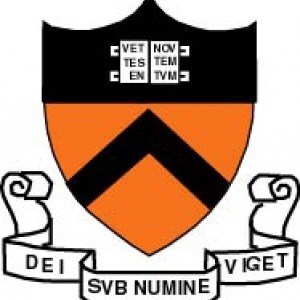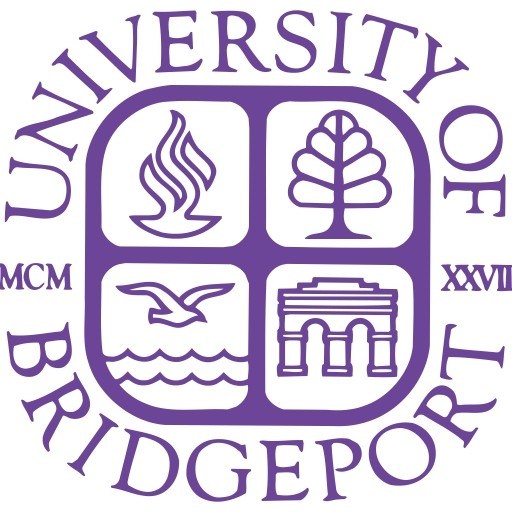Photos of university / #uofcincy
The Bachelor of Arts in Sound Design at the University of Cincinnati offers students a comprehensive education in the art and science of sound creation, manipulation, and production. This interdisciplinary program combines the fundamentals of audio engineering, music production, and theater sound design with hands-on experience in cutting-edge technology and industry practices. Students explore various aspects of sound including acoustic principles, audio recording, mixing, editing, and sound synthesis, preparing them for diverse careers in the entertainment industry, multimedia production, game design, live event sound, and film post-production. The program emphasizes both technical proficiency and artistic expression, encouraging students to develop a keen ear for sound quality and an innovative approach to auditory storytelling. Through a blend of theoretical coursework, real-world projects, and internships, students gain practical skills in using industry-standard software and hardware. The curriculum also covers topics such as ergonomics of sound systems, acoustics, sound design for theater and film, and the integration of sound with other media. Students have opportunities to collaborate with colleagues from other disciplines in the College of Arts and Sciences and the College-Conservatory of Music, fostering a multidisciplinary perspective. The faculty comprises experienced professionals and scholars dedicated to mentoring students and advancing the field of sound design. By the end of the program, graduates are equipped with a solid portfolio and the confidence to pursue creative and technical roles across various sectors of the audiovisual industry. The university’s state-of-the-art facilities, including advanced recording studios and sound laboratories, provide an ideal environment for experiential learning. Whether aiming to work in the film, television, gaming, or live event industries, students receive the education, resources, and industry connections necessary to succeed in a dynamic field.
Year 1
- English Composition (EC)
- Technical Production 1: Introduction to technical theater, scenic production techniques and LAB (QR,FA)
- Appreciation of Theatrical Design and Production (FA)
- Sound Workroom Practicum
- Select History Elective
- Dramatic Literature
- Script Analysis (SE,FA)
- Technical Production 2 with LAB (QR,FA
- Stage Design Graphics II - Hand Drafting Fundamentals
- Sound Workroom Practicum
- History Elective
- Social or Natural Science (SS,NS)
Year 2
- History of Theatre (FA,HP)
- Theatre Sound Technology and Design I (FA)
- Intermediate Composition (EC)
- Stage Lighting I - Fundamentals and Terminology
- Production Practicum
- History of Theatre (FA,HP)
- Theatre Sound Technology & Design II
- Select one of supportive Core
- Vectorworks for the Theatre
- Basic Score Interpretation
- Production Practicum
Year 3
- Sound Design: Drama
- Select Sound Supportive Course
- Select Elective
- Select Elective
- Dramatic Literature
- Production Practicum
- Sound Design: Musical
- Electronics for the Theater, Mechatronic
- Select Sound Supportive Class
- The Business of the Business for Theater Production Personnel
- Production Practicum
- Select One of Supportive Core
Year 4
- Digital Portfolios
- Production Practicum
- Select Elective
- Select Music or Tech Elective
- Music or Tech Elective
- Select Capstone
- Electives
History/Art Appreciation
Student must take 6 credits, two sequential courses, from this list.
- History of Art I (FA,HP)
- History of Art II (FA,HP)
- The Arts Through the Ages I (FA)
- The Arts Through the Ages II (FA)
- World History I (DC,HP)
- World History II (DC,HP)
- European History I (DC,HP)
- European History II (DC,HP)
Dramatic Literature
Student must take 6 credits, two courses, from this list.
- Shakespeare's Plays
- Introduction to Shakespeare
- EARLY MODERN DRAMA I
- EARLY MODERN DRAMA II
- Topics in Drama (HU)
- Introduction to Creative Writing: Drama (FA,HU)
- Contemporary World Literature: Drama (HU)
- African Literature II: Drama (HU)
Supportive Core
Choose two courses or six credit hours with approval from your area Advisor.
- Introduction to Costume and Makeup (FA)
- Assistant Stage Management (DC,HU)
- Introduction to Stage Design and Properties (FA)
Music or Tech electives
Student must take 6 credits, two courses, from this list must be either music for 6 or Tech for 6.
- History of the Music of Western Civilization
- Experimental Rock of the 1960s and 70s (DC,FA)
- Women in British Rock Since 1970 (DC,FA)
- The Music of The Beatles (SE,FA)3
- Jazz History - Early Jazz to Cool
- Jazz History - Hard Bop to the Present
- Technical Production 3
- Technical Production 4
Sound Capstone
one of these courses is required for the capstone in Sound Design.
- Sound Production Studio
- Sound Design Studi
- Common Application and Writing Supplement
- Application fee or application fee waiver submitted via the Common Application
- ACT and/or SAT scores sent directly from the testing agency
- Official high school transcript
- Letter(s) of recommendation
- $100 application fee
- SAT/ACT
- Proof of English Ability and Proof of Math Ability
- TOEFL: 79 iBT
- IELTS: 6.5
- SAT-I: 480 Critical Reading
- ACT: 20 English
- PTE: 53
- ELS: 112
The University of Cincinnati offers various financial aid options to support students enrolled in the Sound Design program. Prospective students are encouraged to explore federal and state financial aid programs, including FAFSA (Free Application for Federal Student Aid), which provides access to grants, loans, and work-study opportunities. The university's Office of Financial Aid and Scholarships offers comprehensive guidance on applying for need-based and merit-based scholarships specifically for students in the School of Creative Arts, including those studying Sound Design. Additionally, the university offers departmental scholarships that may be available to outstanding students demonstrating academic excellence or creative talent in sound design and related fields. Students can also explore private scholarship opportunities, many of which may require separate applications and submission of portfolios or project samples. The university provides payment plans that allow students to spread tuition costs over multiple installments, making education more affordable. Work opportunities within the university, such as assistantships or assistant roles in the Department of Theatre, Film, and Comparative Literature, can also help defray educational expenses while gaining valuable professional experience. Furthermore, some students may qualify for tuition reimbursement or employer-sponsored education programs if they are working professionals seeking advanced training in sound design. International students should consult specific scholarship and financial aid options available for non-U.S. citizens, as eligibility criteria may differ. Overall, the University of Cincinnati endeavors to provide accessible financing solutions to enable students to pursue their education in Sound Design without financial barriers. Students are advised to meet with the university's financial aid advisors early in their academic planning process to explore all available options and submit necessary documentation by deadlines.
The University of Cincinnati offers a comprehensive program in Sound Design, tailored to equip students with the theoretical knowledge and practical skills needed to excel in various aspects of sound production, audio engineering, and multimedia audio design. The program emphasizes a multidisciplinary approach, integrating creative arts, engineering principles, and modern technology to prepare students for diverse careers in the audio industry. Students engage with coursework that covers the fundamentals of acoustics, audio recording, mixing, editing, and sound synthesis. They also explore specialized topics such as sound for film, television, video games, virtual reality, and live performance. The curriculum is designed to foster technical proficiency as well as artistic sensibility, encouraging students to develop their unique voice and style in sound design.
Facilities at the university include state-of-the-art recording studios, editing suites, and computational labs, providing students with hands-on experience using industry-standard software and hardware. In addition to classroom instruction, students participate in collaborative projects, internships, and real-world audio production tasks, enabling them to apply their skills in practical settings. The program is supported by faculty who are experienced professionals and researchers in the field of sound design, ensuring that students receive mentorship grounded in current industry practices. Graduates of the program are well-prepared for employment in diverse sectors, including film and television post-production, gaming, live sound, musical production, and virtual/augmented reality environments. The program at the University of Cincinnati aims to foster both technical mastery and creative exploration, preparing students to contribute innovative sound solutions across a broad spectrum of media and technology-driven industries.









